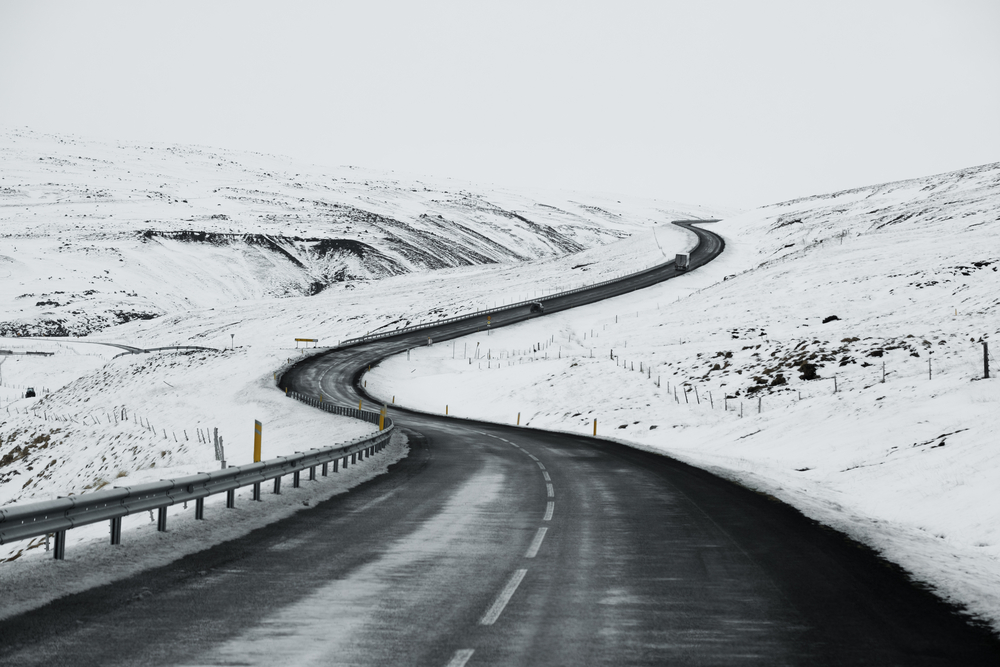Driving in winter has it’s own unique challenges and risks. In the UK the main issues, which tend to manifest themselves from October to March tend to be:
- Fog
- Ice
- Snow
- High winds
- Rain and floods
 The key to remaining safe in winter is preparation, planning and adopting a defensive driving technique. Preparation covers essential vehicle checks that you should do, such as ensuring your tyres are well within the legal limits, and that there is no cuts or bulges in the tyres (essential all year round). The legal limit is 1.6mm of tyre grip, but we recommend on changing tyres earlier – usually at around 3.0mm is a good idea, as tyres lose a lot of their general grip ability and water channeling characteristics as they wear. Wipers are often over looked, but are essential all the time and especially so in winter months. They have a hard job and should be replaced ideally every 12 months. You should also ensure your car is safe and legal and that you’re on top of it’s servicing schedule too.
The key to remaining safe in winter is preparation, planning and adopting a defensive driving technique. Preparation covers essential vehicle checks that you should do, such as ensuring your tyres are well within the legal limits, and that there is no cuts or bulges in the tyres (essential all year round). The legal limit is 1.6mm of tyre grip, but we recommend on changing tyres earlier – usually at around 3.0mm is a good idea, as tyres lose a lot of their general grip ability and water channeling characteristics as they wear. Wipers are often over looked, but are essential all the time and especially so in winter months. They have a hard job and should be replaced ideally every 12 months. You should also ensure your car is safe and legal and that you’re on top of it’s servicing schedule too.
Planning covers a wide range of things, applicable to winter driving. This includes checking your route if you’re heading out in adverse conditions, it also covers taking the necessary precautions and provisions if you need to head out in adverse weather. Having a winter “survival” kit is always advisable – including things like a tow rope, warning triangle, jump leads. spade and warm coat are sensible, along with a mobile phone, which is fully charged, and a hot drink is a good idea too.
Defensive driving techniques are relevant all months of the year, but especially so in winter. Forward planning, observation and being aware of your driving situation will make you much safer on treacherous British winter roads. The last thing you want to be doing on an icy road is to be reacting last minute to an emerging situation, or find yourself traveling too fast for the conditions.
Quick Tips
Driving in fog. Visibility is the main issue here. Being seen and being able to see if critical.
- Watch for driving tailgating you or pulling out in front of you. People sometimes find “comfort” in being able to see the tail lights of the car in front. In fog it’s harder to see, so some drive closer than they usually do. Be aware of this and if needed increase the distance from the car in front of you, to avoid the chances of having to break heavily if an incident occurs. Vehicles can pull out in front of you as they can’t judge the distance as well. Keep your speed down and ensure you’re well lit with fog lights if visibility is seriously reduced.
Driving in ice and snow. Tyre grip is the main issue here, along with visibility if the snow is coming down hard.
- Your distance from the vehicle in front should be 10 times that of dry weather. Only head out if necessary. Defensive techniques here include very careful use of the controls, smooth steering, careful application of the brakes, and accelerator will help reduce the chances of a skid occurring. Also trying to keep in the highest gear possible. If possible and safe to do so, always try and keep momentum up as stopping can sometimes make it hard to get going again.
Driving in high winds. Vehicle destabilisation and impacts from debris are the main issues here.
- If you’re on a motorway, avoid keeping abreast of high sided vehicles, as they can be at particular risk from winds. Keep your speed down and a firm, controlled grip on the steering wheel. Gusts of wind can happen on open stretches of road exposed to strong cross winds, or when passing bridges and gaps in hedges. Motorcyclists can be seriously effected by windy weather, so keep well back from them, especially so when they are overtaking high sided vehicles as they can cause serious wind turbulence.
Driving in rain and floods. Aquaplaning and vehicle immobilisation are the main issues here.
- You should double your distance from the vehicle in front in wet weather. One way to avoid aquaplaning is to reduce your speed. Aquaplaning is when water can’t be channeled away quickly enough through the tread on your tyres. A film of water gets in-between your car tyre and road, causing a skid and making steering and braking ineffective. If you experience aquaplaning you should not brake or accelerate and keep the steering wheel following the road ahead. When you need to drive through flood water, keep your engine revs high, and speed slow – riding the clutch will help you do this. After you leave the flood water check your brakes when safe to do so.
Our winter driving courses are designed to help make you a safer, better prepared driver for the winter – you can learn more here.

